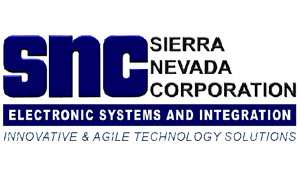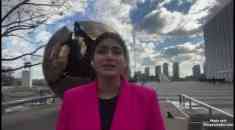SkyWatch: Dream Chaser Closer to Space Flight
 The Dream Chaser space plane, which the Colorado-based company Sierra Nevada Corporation is developing to fly astronauts to and from the International Space Station, was held aloft by an Erickson Air-Crane heavy-lift helicopter in the skies above NASA’s Dryden Flight Research Center in Edwards, California. The helicopter carried a test version of Dream Chaser for two hours during Thursday’s trial, reaching a maximum altitude of 3780 metres and following the path the space plane will likely take during future approach and landing tests at Dryden, NASA officials said.
The Dream Chaser space plane, which the Colorado-based company Sierra Nevada Corporation is developing to fly astronauts to and from the International Space Station, was held aloft by an Erickson Air-Crane heavy-lift helicopter in the skies above NASA’s Dryden Flight Research Center in Edwards, California. The helicopter carried a test version of Dream Chaser for two hours during Thursday’s trial, reaching a maximum altitude of 3780 metres and following the path the space plane will likely take during future approach and landing tests at Dryden, NASA officials said. Sierra Nevada Corporation is developing its Dream Chaser space plane to ferry astronauts to Earth orbit and to the International Space Station.
The space plane’s flight computer and guidance, navigation and control systems were tested during the flight, and its landing gear was deployed as well.
Last week, NASA announced that it had added $15 million to Sierra Nevada’s latest commercial crew award, to help the company meet two additional Dream Chaser milestones.
The new funding brings the value of the award to $227.5 million, Sierra Nevada officials said.
Engineers have been putting Dream Chaser through its paces at Dryden in a variety of ways.
Earlier this month, for example, the space plane was towed down a runway by a pickup truck at several different speeds to test out its braking and landing systems.
Scientists study the incredible movements of space dust
One of the key characteristics of the moon is that it’s covered in dust.
This isn’t household fluff either, it’s extremely abrasive, smells of gunpowder, and sticks like crazy – as the Apollo astronauts discovered.
Without a thick protective atmosphere, the lunar surface has been pummeled by meteorites and micrometeorites for over four billion years, breaking rocks into finer and finer particles.
These are raggedy things, with no wet weathering to smooth them, and their abrasive forms stick like crazy to spacesuits, humans, human nasal passages, and can even dig through Kevlar.
In fact, electrical charges might even produce dust ‘fountains’.
As the rising Sun’s light and radiation sweeps across the lunar surface it could generate large positive charges, enough to kick dust particles a mile high, until they drop back, only to get kicked up again like a pulsing fountain.
We still don’t know whether this is really what’s happening, and the whole subject of the so-called lunar “exosphere” an incredibly tenuous atmosphere, a mere 1/100,000th the density of the Earth’s at sea level, is still relatively little understood.
This may all change after Friday September 6, when NASA launches the Lunar Atmospheric and Dust Environment Explorer, or LADEE (Scotty would be proud, no doubt).
See your ad here
After a 30 day approach, and 30 days of checkout, LADEE will spend about 100 days orbiting the moon and examining any dust that makes it to high altitude (it will carry a dust collector and analyzer) and the chemical contents of the atmosphere.
It’s a modest enough set of goals, but they could help solve this long-standing mystery and help us better understand our rather filthy, but seemingly brilliant, nearest cosmic neighbour – an object that is very much a part of our own planetary history. ( By COL MAYBURY- http://www.maitlandmercury.com.au)
The space plane’s flight computer and guidance, navigation and control systems were tested during the flight, and its landing gear was deployed as well.
Last week, NASA announced that it had added $15 million to Sierra Nevada’s latest commercial crew award, to help the company meet two additional Dream Chaser milestones.
The new funding brings the value of the award to $227.5 million, Sierra Nevada officials said.
Engineers have been putting Dream Chaser through its paces at Dryden in a variety of ways.
Earlier this month, for example, the space plane was towed down a runway by a pickup truck at several different speeds to test out its braking and landing systems.
Scientists study the incredible movements of space dust
One of the key characteristics of the moon is that it’s covered in dust.
This isn’t household fluff either, it’s extremely abrasive, smells of gunpowder, and sticks like crazy – as the Apollo astronauts discovered.
Without a thick protective atmosphere, the lunar surface has been pummeled by meteorites and micrometeorites for over four billion years, breaking rocks into finer and finer particles.
These are raggedy things, with no wet weathering to smooth them, and their abrasive forms stick like crazy to spacesuits, humans, human nasal passages, and can even dig through Kevlar.
In fact, electrical charges might even produce dust ‘fountains’.
As the rising Sun’s light and radiation sweeps across the lunar surface it could generate large positive charges, enough to kick dust particles a mile high, until they drop back, only to get kicked up again like a pulsing fountain.
We still don’t know whether this is really what’s happening, and the whole subject of the so-called lunar “exosphere” an incredibly tenuous atmosphere, a mere 1/100,000th the density of the Earth’s at sea level, is still relatively little understood.
This may all change after Friday September 6, when NASA launches the Lunar Atmospheric and Dust Environment Explorer, or LADEE (Scotty would be proud, no doubt).
See your ad here
After a 30 day approach, and 30 days of checkout, LADEE will spend about 100 days orbiting the moon and examining any dust that makes it to high altitude (it will carry a dust collector and analyzer) and the chemical contents of the atmosphere.
It’s a modest enough set of goals, but they could help solve this long-standing mystery and help us better understand our rather filthy, but seemingly brilliant, nearest cosmic neighbour – an object that is very much a part of our own planetary history. ( By COL MAYBURY- http://www.maitlandmercury.com.au)
Last modified onSaturday, 06 May 2017 10:07
Tagged under
Latest from Admin TOA
- Fat Sal’s Italian Specialties Welcomes Customers in Bayville, NJ with a Renewed Concept
- FFD Wood LLC Delivers Custom Woodwork Solutions from Long Island
- A Tax Expert in the U.S. Tax World: An Interview with Samet Oynamıs
- Announcing the 2025 Edition of the 100 Most Influential Turkish Americans
- CEO Club New York Networking Night Stands Out with the Lamborghini Experience









